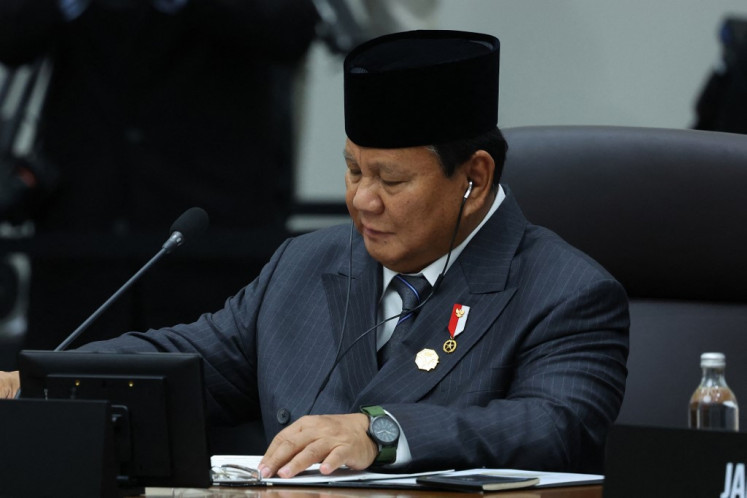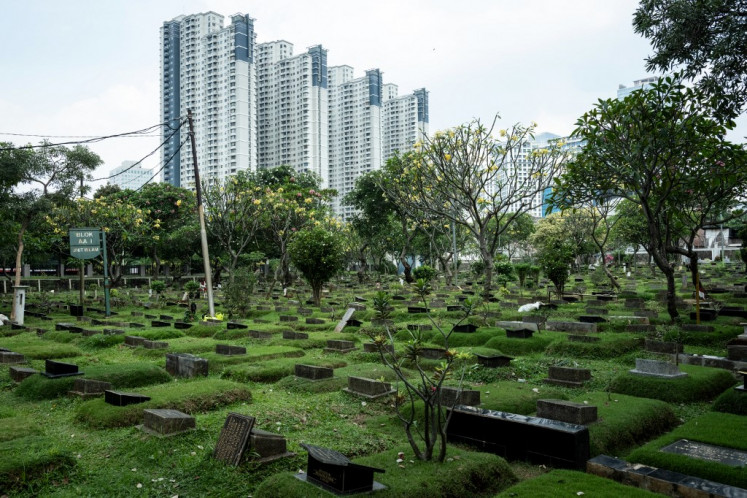Popular Reads
Top Results
Can't find what you're looking for?
View all search resultsPopular Reads
Top Results
Can't find what you're looking for?
View all search resultsHow many provinces does Indonesia need?
Since the introduction of regional autonomy over a decade ago, Indonesia has seen the formation of 205 new autonomous regions — seven provinces, 164 regencies and 34 municipalities — a drastic departure from 32 years of centralized government
Change text size
Gift Premium Articles
to Anyone
S
ince the introduction of regional autonomy over a decade ago, Indonesia has seen the formation of 205 new autonomous regions — seven provinces, 164 regencies and 34 municipalities — a drastic departure from 32 years of centralized government. In total, the country now has 529 autonomous regions: 33 provinces, 398 regencies and 98 municipalities. Proposals for additional regions continue, despite the government’s moratorium pending evaluation of whether the new regions have met their original decentralization purpose: Better public service. The following reports by the The Jakarta Post’s Ridwan Max Sijabat looks at the problem.
Regional autonomy came into law in 1999 as the strongest symbolic breakaway from the earlier centralized, authoritarian rule of the world’s largest archipelagic country. Citizens and critics, however, were quick to question whether conditions were significantly better in the new provinces, regencies and townships.
The House of Representatives largely continued to agree to pass every proposal for a new autonomous region, even those that looked too poor to sustain themselves, leading to suspicions of self-serving politicians. Going by the indicator of the Home Ministry, the new regions were largely under-performing in four areas: good governance, public service, competitiveness and social welfare.
Of the 198 new regencies and municipalities, only Banjarbaru and Cimahi municipalities in South Kalimantan and West Java respectively have shown good performance. One explanation from the ministry has been that they were among the oldest townships since Soeharto’s rule, before they were declared permanent municipalities in 2001.
The legislature, local elites and the central government have been at odds over the ideal number of provinces. The government declared the moratorium against setting up new regions since the dispute over new regencies peaked in an ugly conflict in North Sumatra that led to the death of the Legislative Council speaker Azis Angkat
in 2008.
The moratorium still stands to give the government enough time to evaluate the performance of newly developed regions and to conduct studies on the ideal number of provinces, regencies and municipalities.
So far, the government has suspended processing 181 proposed regions submitted through the Home Ministry and 13 others submitted through the House. Source: Home Ministry, 2012
The Regional Autonomy Advisory Council (DPOD) and the expert team at the Home Ministry were of the same opinion that the government had to maintain the moratorium to prevent them from overburdening the state budget.
In addition to evaluating the performance of newly developed regions, the central government has developed a grand design for the ideal number of provinces, regencies and municipalities until 2025.
According to the grand design, the government has limited the formation of 11 new provinces, to reach a limit of 44 provinces, towards 2025. Taking into account the geographic and demographic perspectives, Papua, West Papua and East Kalimantan are prioritized to be developed into eight provinces given their borders with Papua New Guinea, Australia and Malaysia, and also their population density of between only eight and 16 people per square kilometer.
Source: Home Ministry, 2012Based on their studies and consultations, the Home Ministry says Aceh, North Sumatra, Riau, West and Central Kalimantan can be developed into eight provinces because they were part of 15 rarely-populated provinces. They are also regarded as strategic, given defense issues and their proximity to Malaysia, Singapore and Thailand.
Maluku, East Nusa Tenggara, North Sumatra and North Sulawesi, bordering with neighboring countries such as Australia, Malaysia, Singapore and the Philippines, have their geographic importance to be developed into eight provinces for defense and security reasons.
Five other provinces — Lampung, West and East Java, East and West Nusa Tenggara — could also be developed into ten provinces given their large territories; but their populations are denser than Papua and the other sparsely populated provinces.
The director general for regional autonomy affairs at the Home Ministry, Trencherman, said that considering all factors — including the result of the government evaluation of all 33 provinces and mounting aspirations from local elites — Aceh, North Sumatra, East and West Kalimantan, Central and Southeast Sulawesi and West Papua — were expected to be developed into 14 provinces, while Papua could be developed into five provinces.
He said, however, that in addition to geographic and demographic factors, the government would prioritize the defense aspect in forming new provinces in the future.
“The narrower the regions are, the easier the provision of public services, improving social welfare and strengthening defense,” he said. He added that in addition to Aceh, Riau, West and East Kalimantan and Papua, Central and Southeast Sulawesi would also likely be prioritized as new, smaller provinces.
Siti Zuhro, a member of the Home Ministry’s expert team from the Indonesian Institute of Sciences (LIPI), said the defense aspect has gained a larger portion the country’s geographic and demographic factors following a number of studies and national seminars on regional developments in anticipation of internal and external threats to the unitary state.
According to studies conducted by the government’s eight-member expert team, an additional 53 provinces could be developed from the current 33 if all factors, including fiscal potential, natural resources, defense and ethnic diversity aspects were taken into account. The government, however, estimates that only 44 would be a more manageable figure in the short term.












